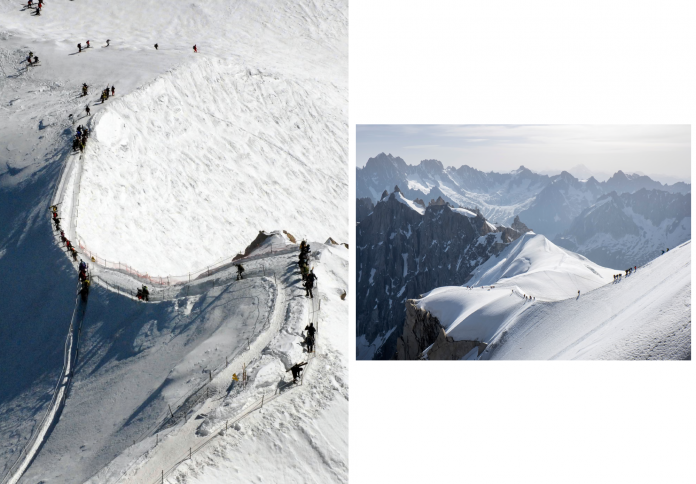The Vallée Blanche in Chamonix is not merely a ski run; it is one of the world’s most spectacular and demanding off-piste glacier descents, a high-mountain journey that transports skiers from the bustling town to the heart of the Mont Blanc massif. For dedicated ski enthusiasts, the descent of the famous valley is a pilgrimage—an opportunity to experience a sense of scale and untamed wilderness often described as a spiritual experience. The adventure begins with the dramatic ascent via the Aiguille du Midi cable car, which delivers visitors to a staggering altitude of 3,842 metres, immediately immersing them in a landscape of sheer, silent beauty. Below them unfolds a vast, white world of tumbling glaciers and crevasses—a 15-to-22-kilometre, 2,000-vertical-metre drop that demands both expert skill and profound respect. The sheer physical and sensory demands of the Vallée Blanche turn the simple act of skiing into an unforgettable encounter with the sublime.
From Town To Summit: The Alpine Overload
The journey’s commencement is abrupt and dramatic, highlighting the unique accessibility of this extreme environment. The Aiguille du Midi cable car offers the only route that provides such direct access to the high Alps, whisking riders from the valley floor to nearly 4,000 metres in mere minutes. This sudden shift in altitude and environment is deeply affecting, generating a palpable mix of anticipation and profound nerves among the soon-to-be-descending skiers.
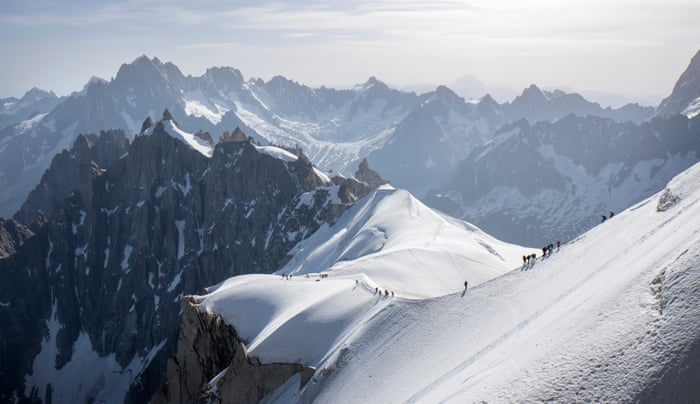
Stepping out of the cable car platform into the thin, crystalline air, the sensation is one of being on “another planet.” The scenery is beyond epic: the highest peaks of the Alps surround the area, with the snow-covered Mont Blanc towering over the entire massif. The panoramic view of this pristine, vast landscape is a powerful emotional trigger, inspiring a sense of awe that is as “breathtaking” as the altitude itself. This initial visual shock sets the stage, transforming the day from a sporting challenge into a meditative journey into the forces of nature.
The Ridge Walk: A Test Of Commitment
Before any skiing can commence, the first and often most intimidating obstacle is the famed ridge walk. Having reached the high alpine arena, skiers must detach their skis, strap them to their packs, secure crampons to their boots, and navigate a narrow, precipitous ridge secured by fixed ropes. This delicate 15-minute descent along the sheer arête, with a vertical drop stretching below toward the pea-sized buildings of Chamonix, demands immediate focus and composure.
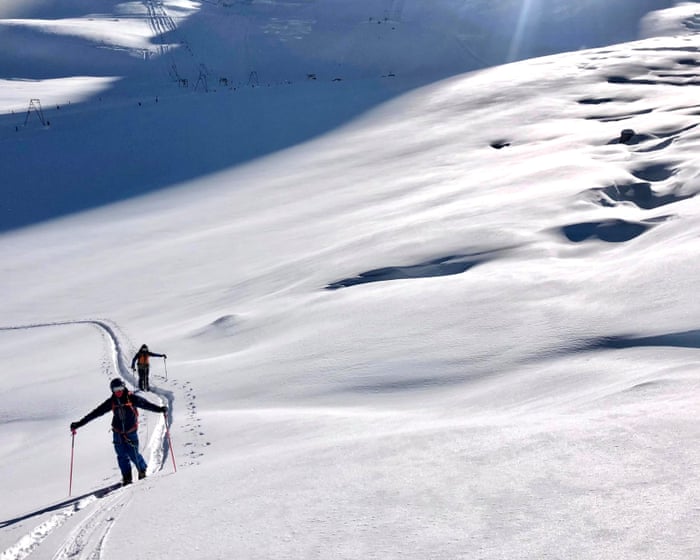
The ridge walk acts as a critical filter, forcing participants to commit fully to the high-mountain environment. It is a moment of profound vulnerability where the only barrier between the skier and the void is a simple rope, and the icy conditions can make the passage treacherous. Successfully navigating this exposed section not only requires technical skill but also a stoic mindset, symbolizing the necessary transition from resort skier to high-altitude explorer. It is a tangible, physical representation of crossing a threshold into the wild, unpatrolled world of the glacier.
The Glacial Terrain: Skill, Safety, And Crevasses
The Vallée Blanche is fundamentally an off-piste experience, completely unmarked, unpatrolled, and covering active glaciated terrain where hazards like crevasses are omnipresent. Unlike a groomed resort run, the conditions can vary wildly, from smooth powder after a fresh dump to heavy, challenging moguls created by high skier traffic. This makes the descent a true test of a skier’s ability to maintain control over varied and demanding snow types for several hours.
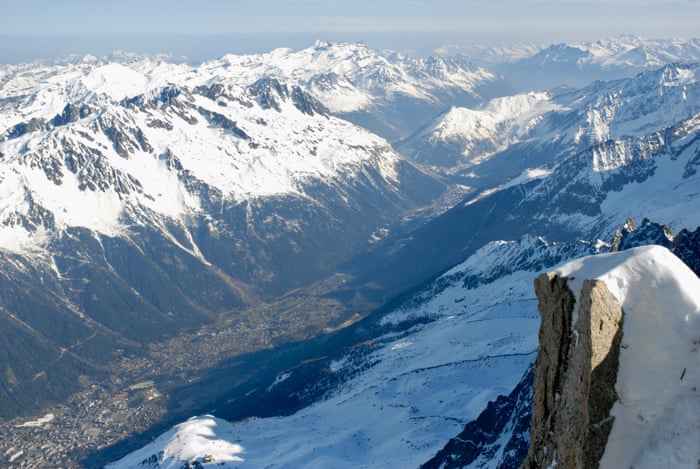
As a result, a guide is strongly advised—though not compulsory—for all first-timers and those unfamiliar with glacier travel. The guide’s role is essential, not just for route finding and assessing the safety of the snowpack, but for managing the inherent risks. They ensure the group carries necessary safety gear—avalanche transceivers, shovels, and probes—and choose an appropriate route from the available options (The Classic, Petit Envers du Plan, etc.) based on the group’s ability and the snow conditions. This guided experience allows the skier to focus on the transcendent beauty while the professional manages the constant environmental danger.
The Mer De Glace: A Wet, Icy Conclusion
The final leg of the Vallée Blanche descent, after a welcome break at the Refuge du Requin, involves skiing onto the vast, cracked expanse of the Mer de Glace (Sea of Ice). This section leads to the Montenvers train station, which provides the final transport back to Chamonix. However, due to glacial recession, the Mer de Glace portion is increasingly challenging and often concludes with a long climb of hundreds of steps to reach the train platform.
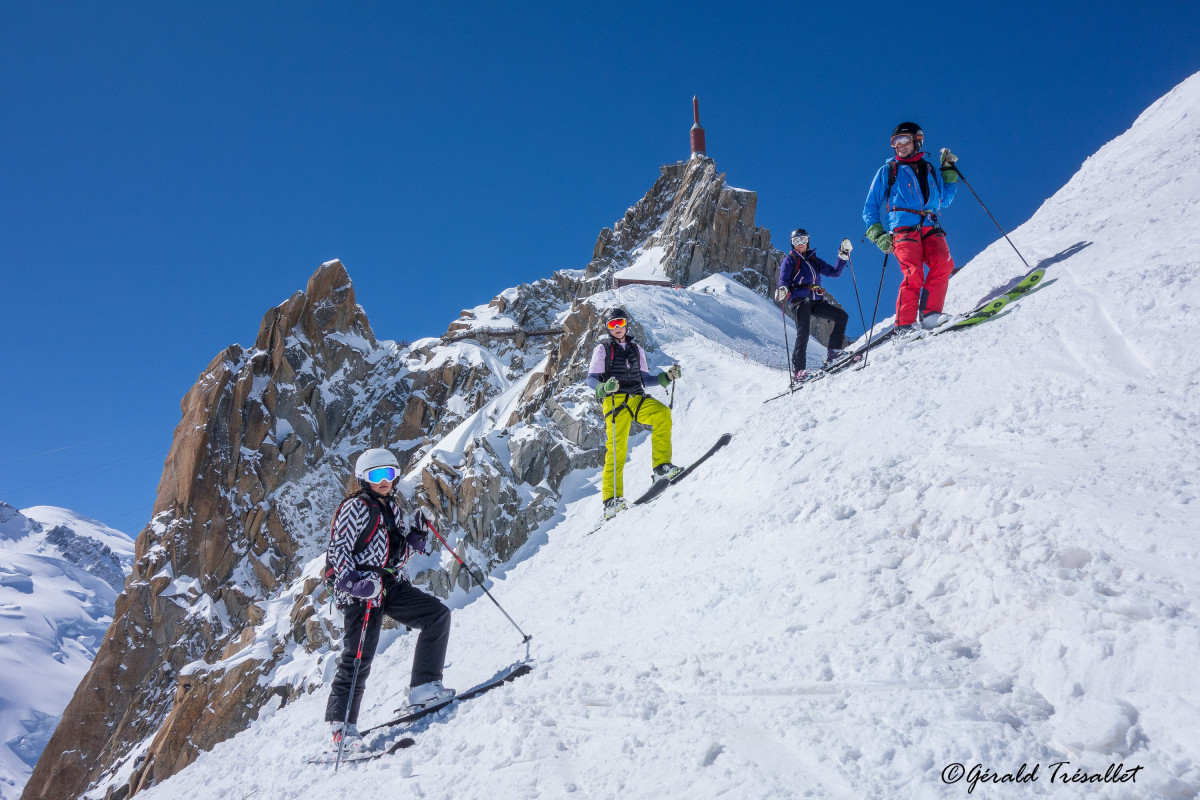
In periods of heavy snow, the descent can continue all the way to Chamonix town centre, but more often, the journey involves the inevitable queue for the Montenvers railway. The view here, witnessing the dramatic retreat of the glacier, adds a sobering, environmental layer to the spiritual experience, underscoring the dynamic and fragile nature of the high alpine world. Regardless of the finish, the entire 4-to-6-hour round trip—from the cable car ascent to the final return to the valley—is a memorable voyage that fully utilizes the day, leaving the skier with a powerful sense of accomplishment and a profound respect for the mountains.
